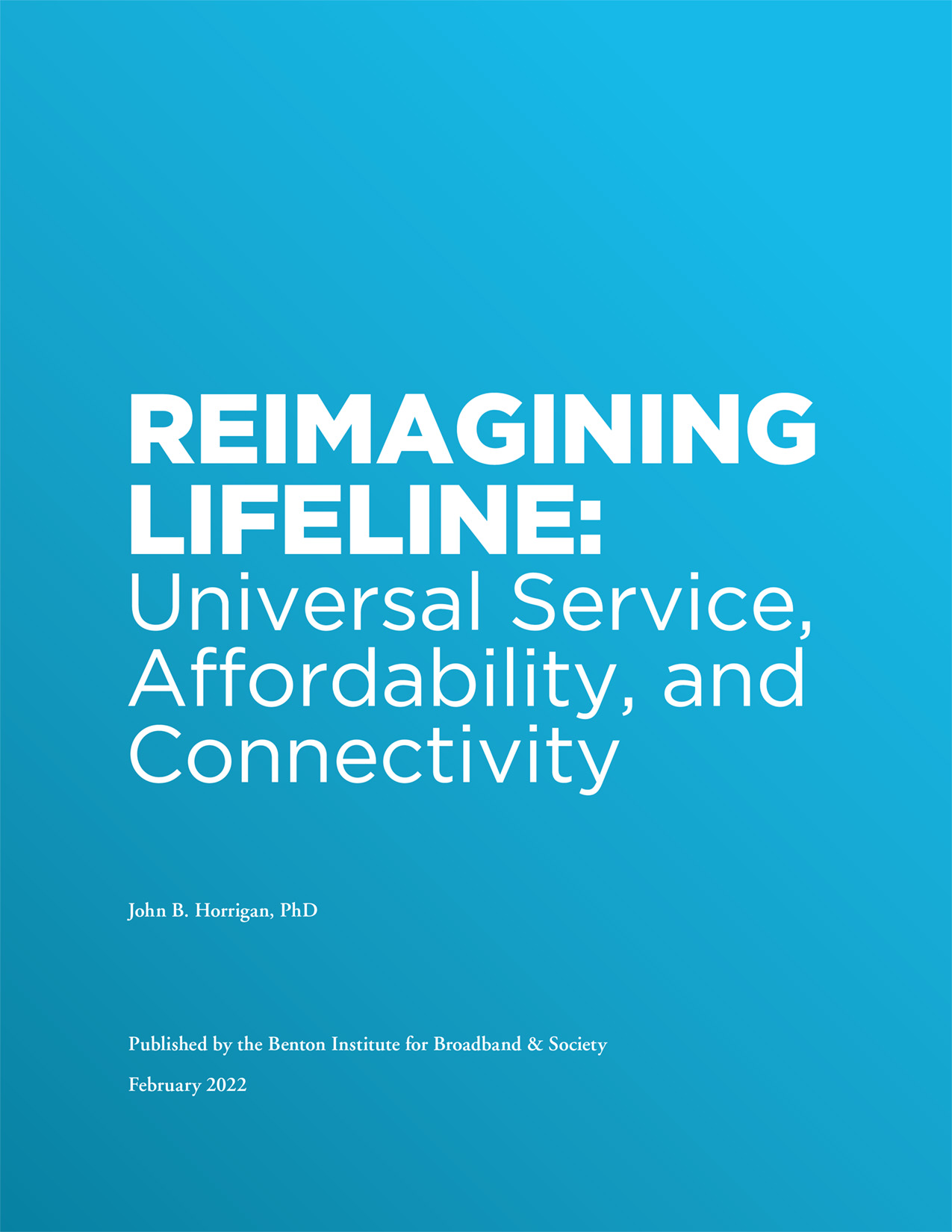Reimagining Lifeline: Universal Service, Affordability, and Connectivity
Written by John B. Horrigan, PhD
The Affordable Connectivity Program represents an inflection point for Lifeline and universal service.
Prior to the pandemic, the Federal Communications Commission’s Lifeline program supported mainly wireless communication services for low-income households; its $9.25/month subsidy resulting in service plans that restricted voice and data usage.
To address Americans’ online connectivity needs during the pandemic, Congress directed the FCC to launch the Emergency Broadband Benefit program—a historic expansion of financial support for universal service. With the passage of the Infrastructure Investment and Jobs Act, the Emergency Broadband Benefit program has transitioned to a longer-term Affordable Connectivity Program, a $30-per-month service subsidy for qualifying households.
The Affordable Connectivity Program’s $30-per-month subsidy offers the opportunity to take a fresh look at policies to promote online access for low-income people in the United States.
The Affordable Connectivity Program is a marked change in mindset about universal service, the principle that all Americans should have affordable access to essential communications services. Lifeline has experienced budget austerity and operational challenges for over a decade, which may hinder the success of the Affordable Connectivity Program. Burdensome enrollment processes and minimum service standards have, in recent years, served to discourage Lifeline enrollment—an impulse driven in part by a flawed program-funding mechanism. The Affordable Connectivity Program represents a departure from Lifeline’s funding mechanism with the goal to maximize enrollment of eligible households—a different emphasis than in the recent past.
The Reimagining Lifeline: Universal Service, Affordability, and Connectivity report:
- examines data about the tools typical American households have for accessing the internet and how affordable they are, and
- explores the administrative journey of Lifeline, which is all the more significant because the Universal Service Administrative Company, which administers the Lifeline program, will also administer the Affordable Connectivity Program.
Based on this research, this report finds that:
- In the United States, the new connectivity norm is both wireline and wireless, with the devices needed to make use of these broadband services.
- Low-income households are spending too much on connectivity.
- Lifeline has survived “managed decline.”
The new Affordable Connectivity Program, coupled with Lifeline, has the potential to deliver more equitable connectivity solutions to low-income households.
This report recommends that:
- The standard for universal service support in the United States should be a fixed broadband subscription and a cellular data plan that meets connectivity needs outside the home.
- The Affordable Connectivity Program should foster home wireline broadband connectivity. An increase in the Lifeline subsidy to $20 per month can position that program to better address wireless mobile needs for eligible low-income households.
- Operationally, policymakers should take steps to facilitate Affordable Connectivity Program enrollment, which includes ensuring that the National Verifier links to all appropriate databases to improve the enrollment process for beneficiaries. In addition, funding is critical for outreach in communities with high proportions of eligible households.
Please include the following attribution when citing this report: Horrigan, John B. “Reimagining Lifeline: Universal Service, Affordability, and Connectivity” Wilmette, IL: Benton Institute for Broadband & Society, February 2022. https://www.benton.org/publications/reimagining-lifeline
John B. Horrigan, Benton Senior Fellow, is a national expert on technology adoption, digital inclusion, and evaluating the outcomes and impacts of programs designed to promote communications technology adoption and use. He served at the Federal Communications Commission as a member of the leadership team for the development of the National Broadband Plan. Additionally, as an Associate Director for Research at the Pew Research Center, he focused on libraries and their impact on communities, as well as technology adoption patterns and open government data.


